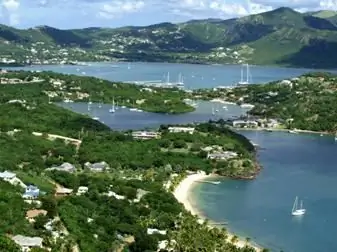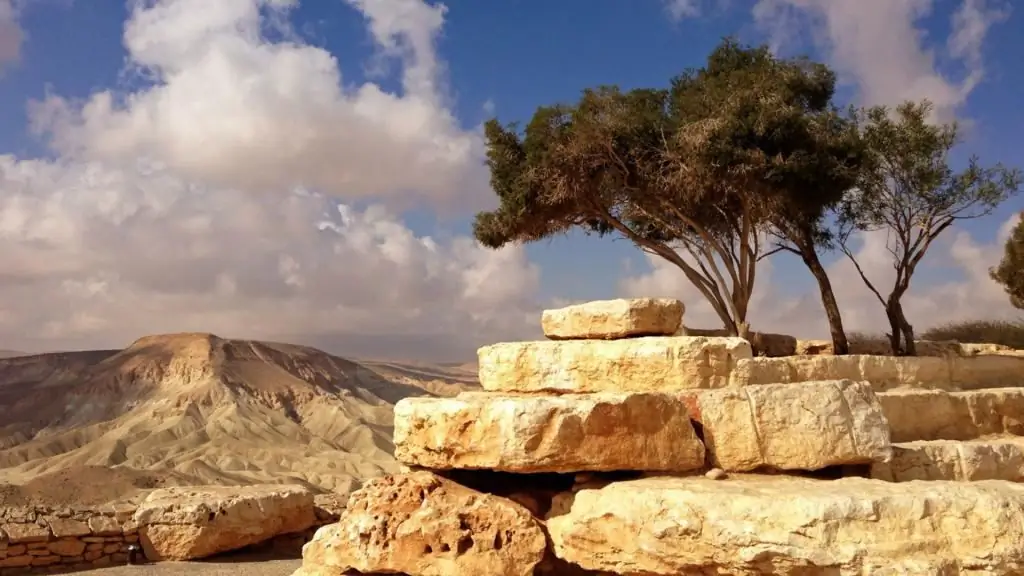- Author Harold Hamphrey [email protected].
- Public 2023-12-17 10:06.
- Last modified 2025-01-24 11:10.
Almost at the end of the world in the cold Sea of Japan there is a piece of fertile land with bright carpets of flowers, majestic groves of evergreen trees, singing sands and restless flocks of white-winged gulls. This is Petrov Island - a piece of paradise, exciting with its legends and surprising with dozens of signs. Many people dream of visiting the island, but only 1,000 people a year are allowed on the island. Although the size of this piece of land is tiny, excursions along it leave a lot of unforgettable sensations and impressions. Some even consider Petrov Island to be an anomalous zone, as hinted at by the bizarre shapes of long-lived trees. They also say that unprecedented treasures are buried here, but it is forbidden to look for them, because these lands are reserved.
We invite you to take a short walk around this unique island, look at the campsite located on it and admire all its sights.

Location
Where Petrov Island is located, the places are quite wild and uninhabited. Onethe word is a preserve! You need to look for this island in the northern waters of the Sea of Japan. It lies just 660 meters from the shores of the Singing Sands Bay. The nearest settlement from the island is the village of Transfiguration, located on the shores of the bay of the same name. It is 8 km by water and about 10 km by land. The second settlement located close to the island is the village of Kievka, which is located on the river of the same name. To him in a straight line about 9 km. The rest of the coastal area is occupied by the forest lands of the Lazovsky Reserve. It is 226 km to Nakhodka, the nearest major city from the island along the highway, and about 335 km to Vladivostok.
Petrov Island (Primorsky Krai), how to get there
A trip to this wonderful island is not easy.
Motorists should follow from Nakhodka along the P447 highway to the village of Lazo, where you need to turn onto the P448 highway leading to the village of Preobrazhenie. Moving along this road, you need to turn behind the village of Benevskoye at the sign for Kievka, reach the barrier. There is a checkpoint where entry to the territory of the reserve is paid. It is advisable to book a pass in advance. From the barrier the road leads through the forest to camp No. 10. From there, they are transported to Petrov Island by motor boat. Crossing on personal watercraft is prohibited.

It's even more difficult to get here by public transport. There are bus routes from Vladivostok and Nakhodka to Transfiguration. Currently, a private minibus runs along this route. You can check the departure time and price on the carrier's website. You need to go to the villageLazo, from where excursion tours are organized to the island.
Geographic characteristics
Petrov Island is very small. Its length between the extreme points is less than a kilometer, and its width is about 550 meters. The area of this span of land is only 40 hectares. From the side, it resembles a whale carcass, while its highest point is 113 meters. The shores of the island from the sea are rocky and impregnable, and from the mainland they are more gentle. On its territory there is a spring, which, according to the workers of the reserve, has healing properties. Once upon a time, many hundreds of years ago, the Chinese lived here, who had slaves. They built a thin sandy spit that stretched for almost 600 meters and ended just 40 meters from the shore of the bay.

Historical facts
Petrov Island keeps many secrets. Primorsky Krai, whose history dates back to the Paleolithic, has known both glorious and sad events in its lifetime. As scientists suggest, once the lands of Petrov Island were a cape. Here, the sites of primitive people who lived about 10,000 years ago were discovered. Now the island has been declared a nature reserve, so archaeological research is prohibited on it. Earlier excavations indicate that the short-lived kingdom of Bohai was located here.empire. In the 10th century, the Khitans conquered it, and later the island passed to the Jurchens. The last rulers of the island were Chinese pirates, who were called ilou. It was on their orders that the slaves built a sand spit. Ilou deliberately did not bring it to the very shore, so that enemy forces could not easily cross to the island. In the future, this piece of land became part of Russia. It was named after Alexander Petrov, rear admiral and traveler who took part in several expeditions to explore Primorye.

Animal World
Petrov Island is extremely interesting to visit. The Lazovskoy Reserve, in whose possession it is included, has under its protection more than 300 species of birds and about 100 species of animals. The island is mostly inhabited by birds. Gulls, sea eagles, white-belted swifts, Ussuri cormorants nest here, and from mammals you can meet only rodents and squirrels. By the way, there is a saying that whoever sees a squirrel first should make a wish.
Other permanent terrestrial inhabitants of the island are an impressive detachment of insects and a very small detachment of snakes. But spotted deer, bears and even tigers visit here for a short time.
The water world near Petrov Island is more diverse. Seals love to bask on its rocky "beaches". On the seabed, through the unusually clear water, you can see sea urchins, stars and corals. Dozens of species of fish, octopuses and other shellfish live here. In October, migrating whales stop to rest and feed near the island.

Plant World
Petrov Island (Primorsky Territory) is famous for its unique beauty and diversity of flora. Scientists have counted about 300 species of higher vascular plants here, including lemongrass, ginseng, orchids, aralia, eleutherococcus, Korean pine (grows only in this region). But the most famous plant is undoubtedly the yew. According to legend, the Chinese brought it to the island. They valued yew wood very dearly, for example, a woman cost them two modest-sized planks. There are legends that in their yew alleys, the ilou performed sacred rites, and even performed human sacrifices. Now the crowns of these trees have formed such a dense canopy that there are practically no other plants under it. Only a few species were able to settle down there, including linden and phellodendron or Amur velvet.

Tours
Excursions to Petrov Island (Primorsky Territory) are organized from the village of Lazo. They cost from 5000 rubles. Tourists are taken to the Singing Sands Bay, which is also a tourist attraction. This name was given to her because the sand in it makes characteristic sounds when walking. Further, if the weather permits, tourists are transported to the island, where they follow the trail. Its length is 2.7 km. Smoking and tearing plants is prohibited here, but it is allowed to photograph them. The route passes through the main attraction of the island - a yew grove. In addition, here you can see stone ovens and earthen ramparts left over fromilou, admire the Bay of Love, bordered by almost impregnable rocks, two unusually shaped rocks, called Grandfather and Baba.
If the weather is stormy or rainy, they do not ship to the island.

Recreation centers
Many are concerned about the question of where to stay if you can’t immediately get to Petrov Island. Primorsky Krai has not yet been developed enough, but even here there are comfortable tourist bases and campsites. The most desirable for tourists is located on the island. Here, tents are set up in a strictly designated place, it is allowed to make fires nearby. Meals for tourists are organized complex, you do not need to cook anything yourself. The second camp is set up in Singing Sands Bay. Here, many are waiting for good weather to cross to the island.
Those who could not find a place in these two campsites can stay at the Olenevod camp site and at the Orlan camp site. Both are in close proximity to Singing Sands Bay.
Reviews
Everyone who has visited Petrov Island describes it as a wonderful and even, to some extent, mystical place where you want to return. The advantages of the island are called its unique nature, unusual microclimate, clean shores with clear water and white sand. As disadvantages, tourists note not always suitable weather conditions that prevent the crossing to the island, and difficulties in traveling to the Singing Sands Bay.






